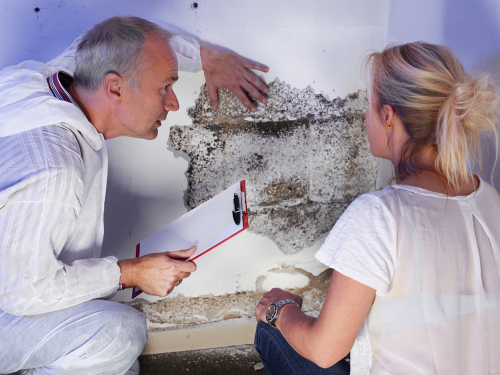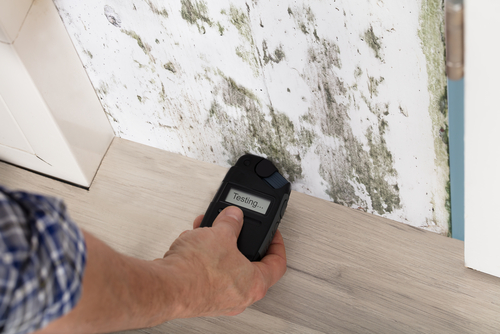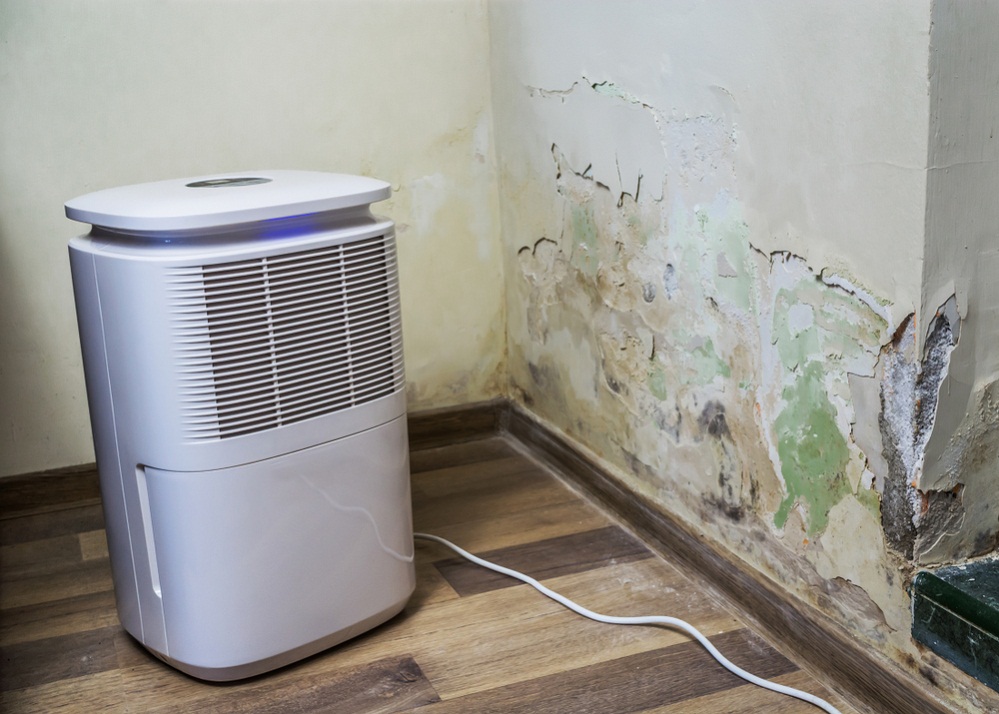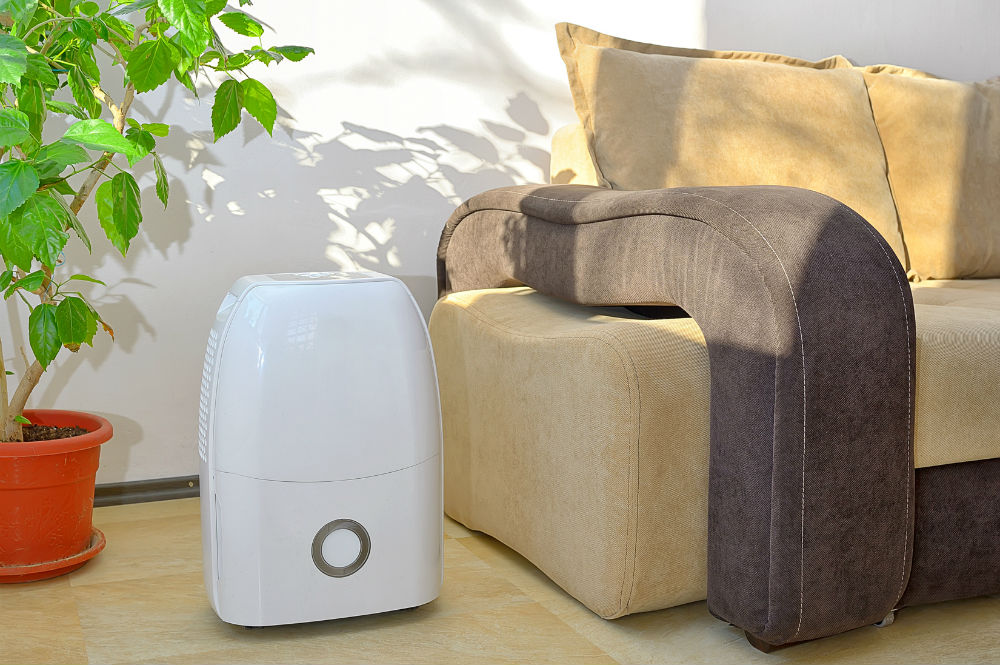Dehumidifiers continue to grow in popularity.
They are useful machines that eliminate excess moisture from your home while protecting your belongings and your home’s structure from harm.
And of course, they can make your home feel more comfortable.
Dehumidifiers that also control mold provide a lot of health advantages. They are especially beneficial to people with asthma since they can breathe easier and get some fresh air.
But just how successful are dehumidifiers in controlling and eliminating mold in your home?
How, exactly, do they do this?
In this guide, we’ll answer these questions and others to explain how to correctly use a dehumidifier to solve this common problem in your home.
How Does A Dehumidifier Control Mold?
Dehumidifiers work by ingesting humid air in a room and passing it over coils to remove the excess humidity.
Then, the dried air is cycled back into the room and the excess humidity is removed as liquid water.
Once your room air has been dried using a dehumidifier, condensation on surfaces in your home is no longer an issue.
This is the key to understanding how dehumidifiers control mold.
Mold cannot grow without a fresh supply of water; so without condensation, your furnishings floors and walls will remain unaffected by moisture damage.
The size of dehumidifier you need depends upon the size of the room/area that needs to stay dry. So make sure you purchase one that can process the amount of air in a room your size.
In addition, dehumidifiers vary in terms of how much moisture they can eliminate from a room. The smallest units remove 30 pints daily, and the largest will remove over 90 pints a day.
What Is a Proper Humidity Level?

The volume of humidity the dehumidifier removes from your home is very important to know.
This is because mold in the home will stay toxic and active if humidity ever rises above a particular level.
Generally, if the humidity level is more than 60%, then mold will grow and become an issue.
Given even the smallest access to a damp surface, mold spores will continue to be released and infect the home.
When dehumidifiers are correctly sized for a room, the humidity level will stay below 50-60%. The mold spores cannot develop and spread.
If the correct low humidity level can be maintained for one week, mold spores will be deprived of water and will die. New spores will not form in any way, and the air will become easier to breathe.
Examining the humidity level of the house is fairly simple. Visually, you should be able to see clear indications of humidity, such as condensation on the mildew growth, windows, or water stains on ceilings and walls.
To check the level more precisely, you should buy a hygrometer. Most are battery operated and look like a temperature gauge.
By following the guidelines provided by the manufacturer, you should be able to use your hygrometer to test the home’s humidity levels and adjust your dehumidifier correspondingly.
Do Dehumidifiers Remove Existing Mold Spores?

Although dehumidifiers can prevent mold development and the spread of new spores, they can’t eliminate the spores already in existence.
To make sure the source of the mold is gone, the spores need to be removed and the area needs to be cleaned.
There are many specialty cleaning products that you can find online that can help eliminate mold spores.
Alternatively, common household solutions like soap, water, and bleach will remove mold.
Remove Mold From Your Dehumidifier
The collector bucket is a moist and hot place, which is just the condition where mold is likely to form.
To prevent mold from growing inside your dehumidifier, you must empty the waste water regularly.
Your dehumidifier’s waste water bin should have a “Full” line on it, which will inform you exactly when you must empty it.
How frequently you need to empty the waste water depends on where you’re located and what local climate conditions are like. It may range from once every couple of days to several times a day.
If you’re a forgetful kind of person, there’s one more option.
You can run a drain hose from the dehumidifier to a floor drain or sump pump. Then, the dehumidifier will drain automatically as it is filled.
If you have a severe mold problem in your house, it is suggested that you get it professionally eliminated and then continue using your dehumidifier afterward to limit additional spore development.
Common Household Molds
Although there are as many as 300,000 molds known to the scientific community, some are more prevalent than others, particularly in indoor environments.
Alternaria is one common indoor mold. This mold usually grows on crops, and it is a frequent cause of hay fever and asthma.
Aspergillus is a common household fungus that can pose a severe threat to people whose immunity is compromised and those with allergies.
Cladosporium is a non-toxic mold that can trigger allergy symptoms like hives, a post nasal drip, watery eyes, and an itchy throat.
Penicillium is another common mold found inside homes that is also used in antibiotic production. Left untreated, it can spoil food and destroy leather.
Toxic Molds Found In Homes
Unlike non-toxic molds, toxic mold generates mycotoxins which can be harmful.
Exposure to toxic mold can cause a multitude of symptoms, including headaches, fatigue, and nausea.
One well-known toxic mold in North America is named Stachybotrys chartarum, otherwise known as black mold.
Chaetomium is another prevalent toxic mold that often develops in water-damaged buildings, and it can cause severe health problems such as memory loss, pulmonary hemorrhages, and chronic bronchitis.
Humidity's Role in Mold Growth

High humidity is a significant contributor to mold growth. Mold thrives in a room with a relative humidity of 60 percent or higher.
However, once the relative humidity drops below 50 percent, the mold can’t grow. Ideally, the humidity level inside should range from 30 percent to 50 percent.
After monitoring the relative humidity inside for a week or longer, the dampness source for mold spores will reduce, which means new spores will not have the ability to produce.
Lowering the humidity can prevent mold growth from happening and inactivate the present mold, but a low relative humidity will not kill mold that is already increased.
Conclusion
To answer the question posed at the starting of the post:
Dehumidifiers do prevent mold from spreading, but they cannot completely eliminate mold from your home. To do that, you’ll need to get your home professionally cleaned after getting control of your humidity problem.
That said, the best dehumidifier for mold can stop an invasion of new mold and will work to prevent any additional spore growth in the house.
Have you had experience trying to rid mold from your home?
Tell us how you solved the problem – we’d like to hear it!
Do not ignore indications that you have mold in your home.
It can create an unhealthy environment for and needs to be dealt with before it worsens.
I’m a degreed ME (mechanical engineer) who is passionate about machines of all kinds. I created MachineWonders.com as a way to connect with others who love machines like me – or need help choosing one for their needs, application, or situation.




Removing all mold spores from your home is nearly impossible. Mold stays “dormant” in the air or on surfaces even when there’s no excess moisture to help it grow.So, to answer the question, dehumidifiers do NOT kill mold, but they do prevent it by reducing humidity.
Regards,
Albert Corbut
Exactly, Albert.